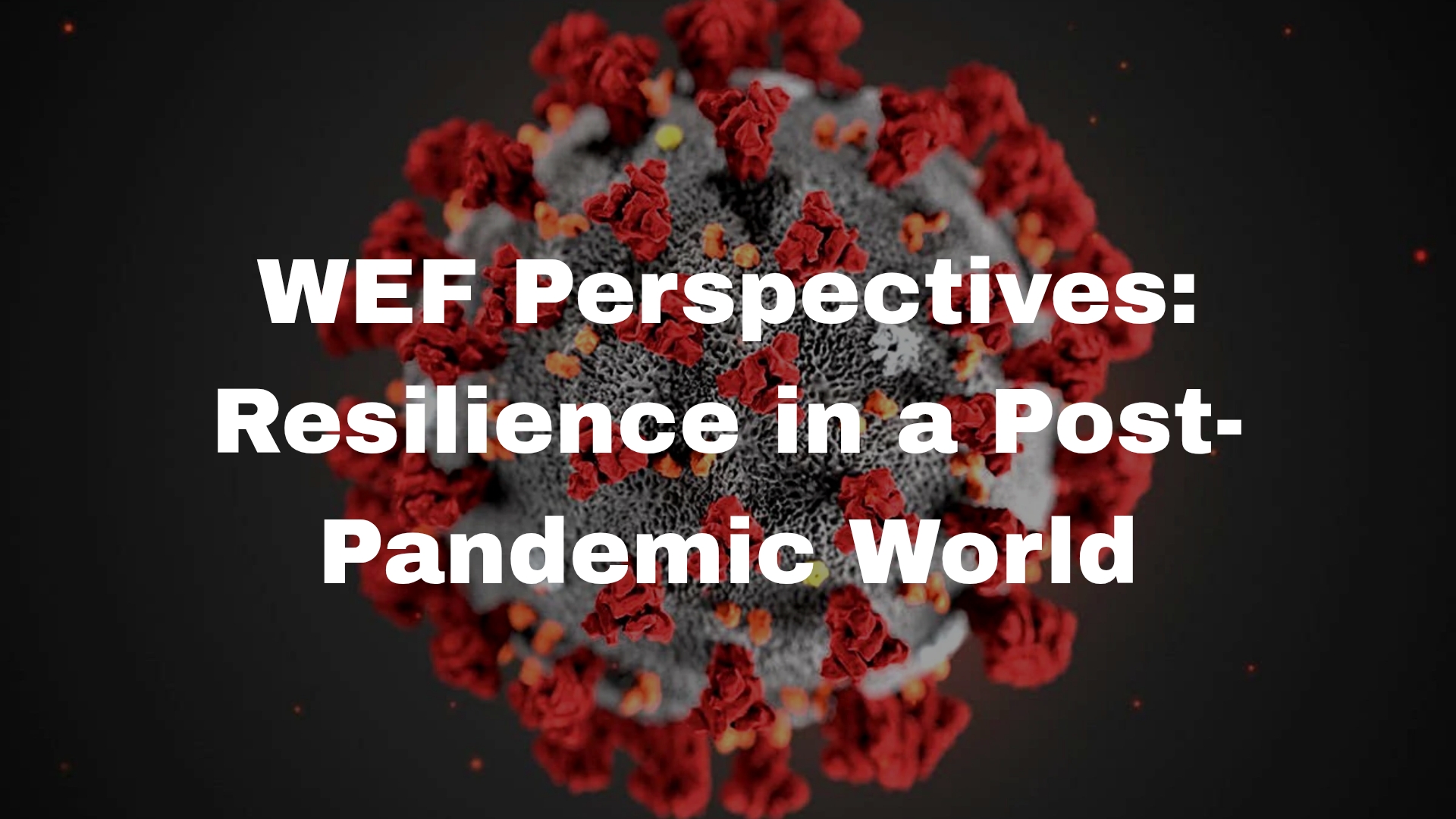
WEF Perspectives: Resilience in a Post-Pandemic World
The COVID-19 pandemic exposed the fragility of global systems—economic, healthcare, and social. In response, the World Economic Forum (WEF) has put forth a series of perspectives aimed at building resilience in a post-pandemic world. Resilience, in this context, refers to the ability of systems—governments, businesses, and communities—to anticipate, absorb, recover from, and adapt to adverse shocks. This article explores the overarching concepts outlined by the WEF and examines how these ideas apply specifically to Gujarat, a fast-growing and industrially significant state in India.
Understanding Resilience
Resilience is not merely about recovery; it’s about transformation. The WEF emphasizes that resilience must be built into the fabric of economic and social systems. This includes robust healthcare, sustainable business models, agile governance, and inclusive digital transformation. The pandemic has shown that countries and regions with stronger institutional frameworks and community cohesion have fared better.
Key Components of WEF’s Resilience Framework
-
Health System Strengthening: The pandemic has underscored the necessity for universal health coverage and investment in public health infrastructure.
-
Digital Infrastructure: Reliable digital systems are essential for remote work, education, and government services.
-
Economic Diversification: Over-reliance on a few sectors can be risky. Diversification enhances stability.
-
Environmental Sustainability: Climate change is an ongoing crisis. WEF calls for green recovery plans.
-
Social Equity: Resilience is incomplete without inclusiveness. Marginalized communities must be part of recovery plans.
-
Public-Private Collaboration: Effective partnerships between government and business are key to swift and effective responses.
Importance of Resilience in a Post-Pandemic World
The need for resilience is not a theoretical exercise—it has real implications for development, investment, and governance. Nations and states that proactively build resilient systems are more likely to attract investors, retain talent, and offer quality of life to their citizens. The pandemic served as a wake-up call to prioritize long-term preparedness over short-term efficiency.
Resilience and India: A National Overview
India’s federal structure means that resilience-building is both a central and a state-level responsibility. The central government has launched initiatives like the Aatmanirbhar Bharat Abhiyan to enhance self-reliance in key sectors. Digital India and Make in India are other complementary schemes. However, the pace and impact of these initiatives vary across states.
Gujarat: A Case Study in Resilience
Gujarat stands out for its robust industrial base, proactive governance, and entrepreneurial culture. During the pandemic, Gujarat demonstrated agility in managing healthcare resources and facilitating economic recovery. Below are key areas where Gujarat aligns with the WEF’s resilience framework:
-
Healthcare Innovation: Gujarat expanded telemedicine services and increased hospital bed capacities rapidly during the crisis.
-
Digital Transformation: The state accelerated digital literacy programs and supported SMEs in going online.
-
Economic Measures: Relief packages for MSMEs, along with infrastructural investments, cushioned the economic blow.
-
Public-Private Synergy: Gujarat’s industrial clusters and SEZs benefited from coordinated efforts between government and industry.
-
Climate Initiatives: With solar parks and wind energy projects, Gujarat is leading in renewable energy adoption.
Challenges Faced by Gujarat
Despite these achievements, Gujarat also faces challenges that need redressal:
-
Rural healthcare disparities
-
Urban congestion and pollution
-
Digital divide in remote areas
-
Water scarcity in certain districts
Addressing these will be critical to ensure that the state’s resilience is both robust and inclusive.
Path Forward for Gujarat
To strengthen its resilience framework further, Gujarat can:
-
Invest in healthcare infrastructure in rural regions
-
Promote green urban planning
-
Expand fiber-optic internet to remote districts
-
Implement integrated water management strategies
Winding Remarks
Resilience in a post-pandemic world is not a luxury—it is a necessity. The WEF’s perspectives provide a comprehensive blueprint for regions to prepare for future uncertainties. Gujarat’s initiatives, while commendable, must evolve continually to meet emerging challenges. With strategic planning and inclusive development, Gujarat can serve as a beacon of resilience not just for India, but globally.
In case of any query regarding WEF Perspectives: Resilience in a Post-Pandemic World, feel free to connect with our legal experts, Tulja Legal, at +91 96380-69905
About the Author
Anju S Nair
Legal Researcher | LLB, MA English| Corporate Lawyer | Business Enthusiast | Founder & CEO at iLawbook.
FAQs
-
What does the WEF mean by "resilience"?
Resilience is the ability to prepare for, respond to, and recover from shocks while maintaining essential functions.
-
Why is resilience important in the post-pandemic era?
It ensures sustainable development, economic stability, and social well-being despite future disruptions.
-
How does digital infrastructure relate to resilience?
It enables continuity of services—education, business, governance—during crises.
-
What role does the private sector play in resilience?
Through innovation, funding, and operational capacity, businesses are crucial for rapid response and recovery.
-
Is Gujarat resilient enough to face another pandemic?
Gujarat has made significant strides but must address rural healthcare and urban challenges for full preparedness.
-
How has Gujarat promoted renewable energy as part of resilience?
Through large-scale solar and wind projects, the state is reducing dependence on fossil fuels.
-
What is the role of social equity in resilience?
Inclusive policies ensure that marginalized communities are not left behind during recovery efforts.
-
How did Gujarat support businesses during COVID-19?
Via financial relief, online platforms, and streamlined regulations.
-
Can Gujarat's model be replicated in other states?
Yes, with contextual adjustments, Gujarat’s proactive and diversified approach can serve as a model.
-
What should be Gujarat’s next steps?
Strengthening rural infrastructure, improving environmental sustainability, and enhancing digital reach.
References
-
World Economic Forum (2020). "Building Back Broader: Policy Pathways for an Economic Transformation".
-
Government of Gujarat (2021). Health and Family Welfare Department Reports.
-
NITI Aayog (2022). "India Innovation Index".
-
International Renewable Energy Agency (IRENA) Reports on India.
-
Ministry of Electronics and IT (2023). "Digital India Initiatives".
-
Confederation of Indian Industry (CII) Gujarat Chapter Reports.
-
World Health Organization. "Health Systems Resilience
